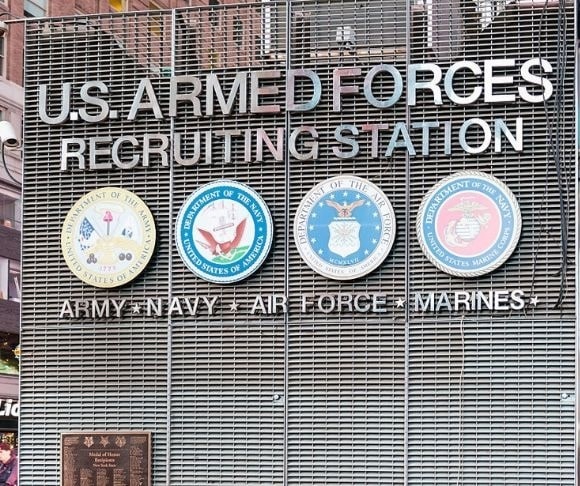The military services have been here before. They’ve lowered recruiting standards to accommodate some societal deficits. The initiatives consistently failed. Duh! What is it about lessons learned that escape military human resources offices? Now the US Navy believes it will improve accession by lowering cognitive testing standards. Before getting too far out front, if numbers of recruits are the only goal, the Navy may have something going for it. But, if the goal is to get the most capable, skilled fighting force, what the sea service is about to embark on is a fool’s errand.
 “As the military struggles to attract new recruits, the Navy on Monday began a pilot program that will let in those who have lower scores on [the] part of the entrance exam used to gauge a recruit’s ability to serve,” Geoff Ziezulewicz reported in Navy Times. Based on Ziezulewicz’s reporting, the candidates for entering the US Navy as enlisted seaman currently take the Armed Forces Qualifying Test (AFQT). The results of the test rank order the candidates among all those taking the test into percentiles. Consequently, if a recruit candidate scores in the 35th percentile, 34% scored lower. The Navy now wants to accept seaman candidates falling into percentiles as low as the tenth. Drew F. Lawrence, writing for Military.com, said:
“As the military struggles to attract new recruits, the Navy on Monday began a pilot program that will let in those who have lower scores on [the] part of the entrance exam used to gauge a recruit’s ability to serve,” Geoff Ziezulewicz reported in Navy Times. Based on Ziezulewicz’s reporting, the candidates for entering the US Navy as enlisted seaman currently take the Armed Forces Qualifying Test (AFQT). The results of the test rank order the candidates among all those taking the test into percentiles. Consequently, if a recruit candidate scores in the 35th percentile, 34% scored lower. The Navy now wants to accept seaman candidates falling into percentiles as low as the tenth. Drew F. Lawrence, writing for Military.com, said:
“Under the program, the service can recruit and contract up to 7,500 prospective sailors this year who fall under what the military calls’ Category IV’ recruits, or high school diploma-holding applicants who score within the 10th and 30th percentile on the Armed Forces Qualification Test, or AFQT. Up to 20% of this year’s active-duty enlisted pool could fall into the lowest allowable aptitude percentile.”
Why Have a Recruiting Standard?
To be fair, the Navy also uses the complementary testing standard obtained from a testing battery called the Armed Services Vocational Aptitude Battery or ASVAB. However, there is a difference, as Lawrence explained. “While the AFQT determines whether someone is eligible for military service at all, the ASVAB determines the applicant’s job prospects,” once accepted. “Anyone who comes in under this change in policy [lowered standard] will have still met the requirement to serve,” Commander David Benham, spokesman for Commander Navy Recruiting Command, told Lawrence in a telephone interview. Nonetheless, if the Navy is willing to accept recruiting candidates with an initial screening aptitude ranking in the tenth percentile or Category IV, why give the test at all? The measurement appears to have no real value. Just check for a pulse.
America Has Lowered Recruiting Standards Before

(Photo by: Jeffrey Greenberg/Universal Images Group via Getty Images)
The lowering of recruiting standards to increase recruiting numbers does have a historical precedent with essentially the same outcome. During the days of conscription in the US military, Secretary of Defense Robert McNamara, in 1966, lowered the criteria for recruiting for serving in the US Armed Forces. The program was called Project 100,000, and as the name indicates, the idea was purposefully to seek out and “recruit 100,000 men each year who were otherwise mentally, physically or psychologically under qualified for service,” wrote Buchanan Waller in his Task & Purpose article “Inside the Pentagon’s shameful effort to draft mentally disabled men to fight in Vietnam.”
The McNamara program, derisively referred to as “McNamara’s Misfits,” was sold to the American public as part of the Johnson administration’s “Great Society.” Ideally, the program was thought a good social experiment lifting the poor and underprivileged out of poverty using military training. The IQ standard could be as low as Category IV (72-91). As a result, “These men were aggressively recruited and pushed through training without having met even the bare minimum standards set for them. They were sent into combat in large numbers, and many died,” Waller explained. Given the intense fighting in Vietnam at the time, a cynic would conclude Project 100,000 was designed to increase the number of eligible bodies to put into the fight – nothing more noble than that.
The motivation is wrong when recruiting standards are lowered to achieve numbers of soldiers, airmen, seamen, Guardians, or Marines. If society has developed a view of military service that does not compel the best Americans to join, fewer but competent, skilled, and motivated military members will have to fill the breach. History tells us they will. To settle for anything less puts in jeopardy those patriots who do serve. Don’t dummy down the US Navy or any other military service.
The views expressed are those of the author and not of any other affiliation.




